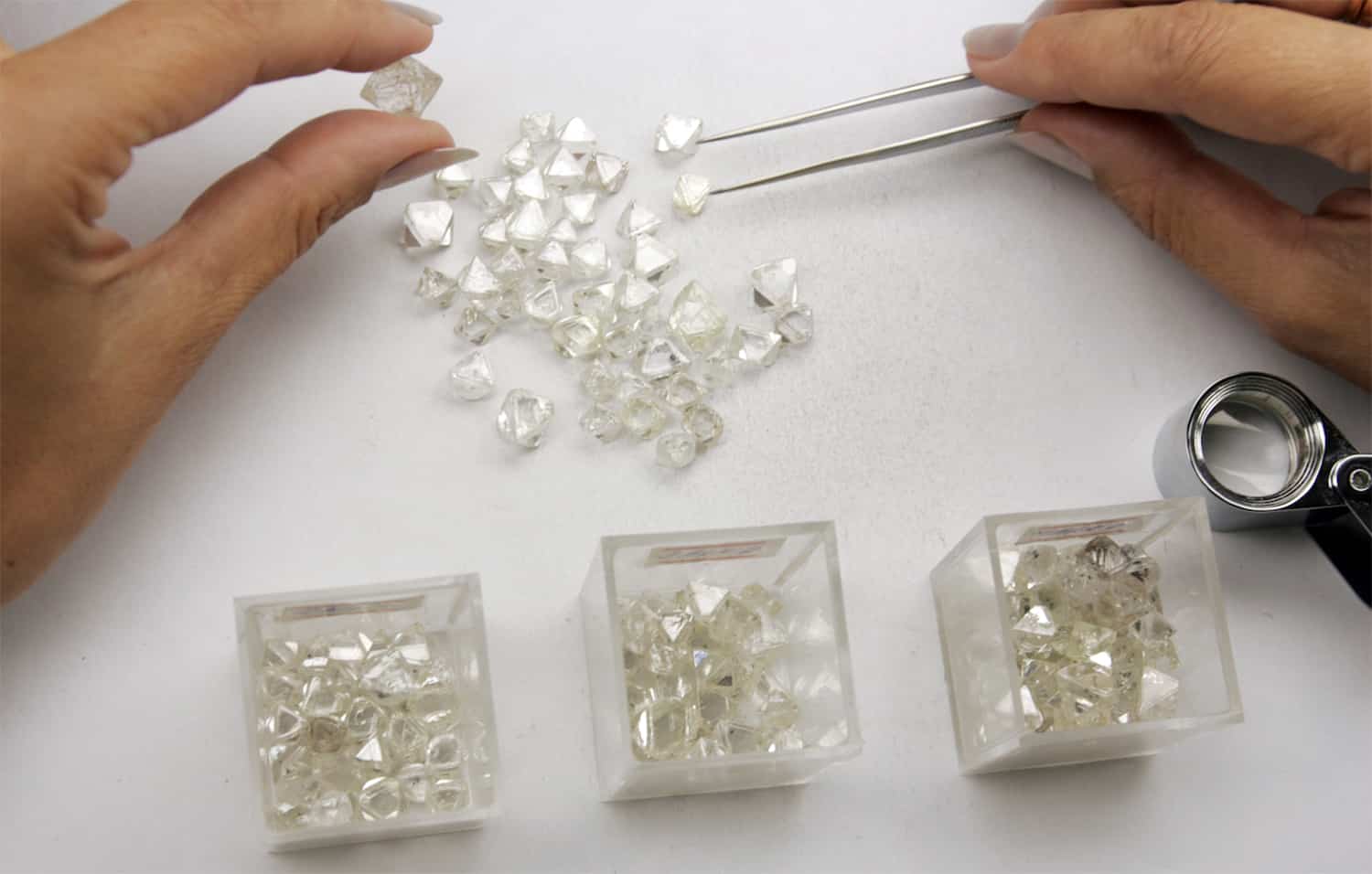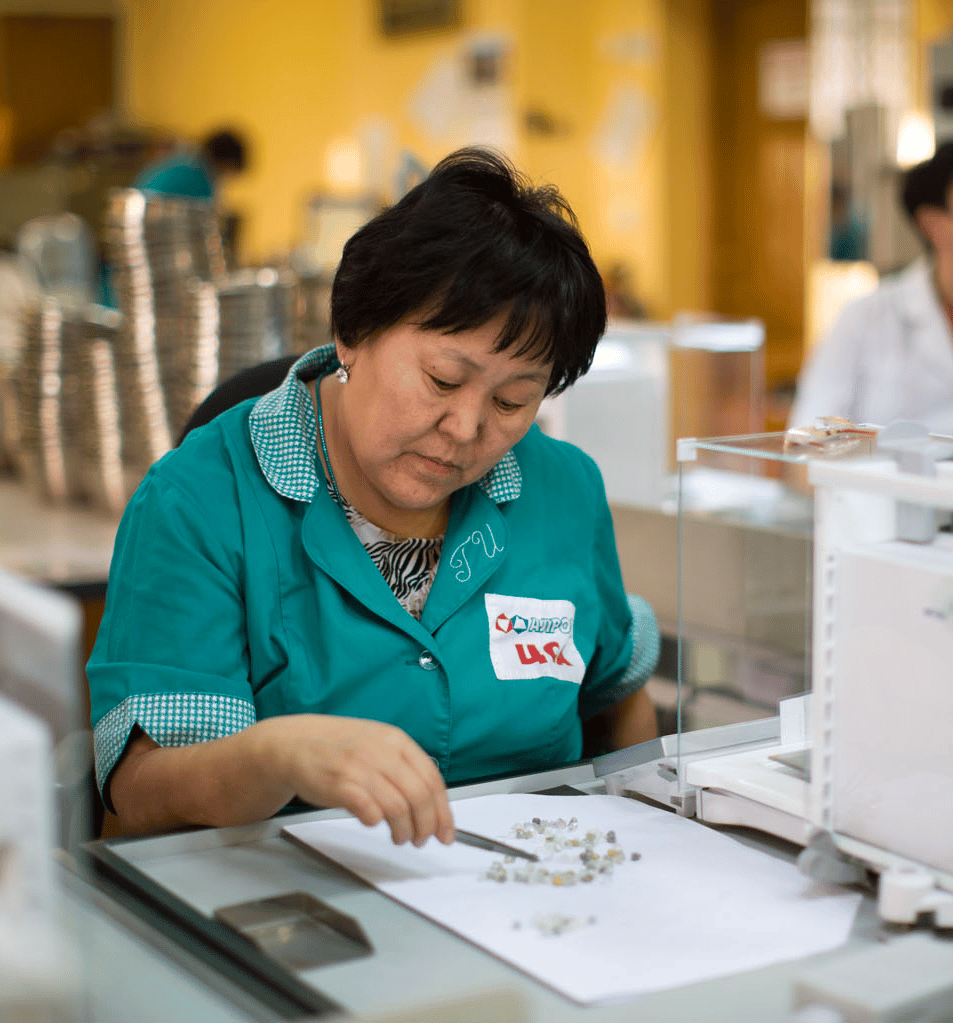Blog
Home » Diamonds blog » ROUGH DIAMOND SUPPLY TO REMAIN TIGHT, IN PART A RESULT LOW CAPACITY OF MINING COMPANIES
Focus on

Photo courtesy of Alrosa
For almost a decade, and in particular in the wake of the almost exponential growth of the Chinese jewelry market, the dominant narrative in the industry has been that rough diamond supply is struggling to maintain pace with polished demand, creating a dynamic by which a long-term rise in prices is almost inevitable.
Even as it became apparent that the double-digit growth in Chinese polished diamond purchases could not really be sustained over the long-term, the narrative remained the same. Large sectors of the Chinese market had not yet been tapped, not to mention sectors of other fast-growing markets in India and Southeast Asia. At the same time, there has not been a massive diamond discovery in recent years, while several large mine closures have already occurred or on the cards. And even if, theoretically, a massive deposit is discovered in the immediate future, it will still take years to develop the site and bring it online.
In a just published interview with Britain’s Financial Times, Alrosa’s deputy chief executive Evgeny Agureev said that the company’s inventories are at historic lows. But he did not cite overwhelming market demand for the situation, but rather mine closures and lack of new projects.
“Our industry will work with limited supply,” he said to the FT. “There are projects, but these projects will not provide goods next year or the year after.”
ROUGH PRODUCTION TOOK HIT IN 2020
On balance, the Russian mining executive sees the issue in a positive light. “From one side, it’s a challenging situation because there is demand and limited supply,” he said. “But on the other side, it’s a good situation because the market will [not] experience overproduction problems.”
2020 had not been a good year for diamond production. According to Bain & Co., production fell by 28 million carats, or around 20 percent during the year, with the biggest decreases coming from Russia, Canada, Botswana, and Australia.
In Russia, Alrosa lowered production levels at the Botuobinskaya, Almazy Anabara, Jubilee, and other smaller mines. Production in Canada declined due to suspended mining operations at Ekati and Renard in March, and in Botswana, Jwaneng and Orapa decreased production by 26 percent.
The only mines to increase production in 2020 were Venetia in South Africa and the Udachny underground mine and Nyurba alluvial deposits in Russia. But, said Bain, the distribution of diamond assortment by size remained relatively constant, with medium and large diamonds accounting for 70 percent to 80 percent or more of production values.

“Our industry will work with limited supply,” Alrosa’s deputy chief executive Evgeny Agureev told the FT. “There are projects, but these projects will not provide goods next year or the year after.”
Much of the falloff in output could be traced to the COVID crisis, where miners preferred to be cautious in terms of production, and work stoppages were relatively frequent. But Rio Tinto’s shutting down of the Argyle mine in Western Australia in November 2020 was planned, removing from the pipeline a facility that on its own had been responsible at one stage for about 10 percent of world production.

Sorting diamonds at an Alrosa facility in Takutia. Photo courtesy of Alrosa.
NOMINAL INCREASE OVER NEXT 5 YEARS
In its report released earlier this year, Bain forecast that production would to remain stable in 2021, driven by the reopening of profitable mines that were suspended in 2020. However, it noted, this increase will be offset by the closure of Argyle.
During the coming three to five years, production will likely grow by a nominal 0 percent to 2 percent per year to allow the value chain to fully rebalance.
One of the mines that is expected to reopen in Alrosa’s Mir mine in Russia, where a flood in 2017 had killed eight miners. But Agureev, this is a process that could take “five to seven” years to complete.
“It’s not easily achievable that we can easily increase the production,” he told the FT. “Once you take the decision to correct your production, it’s not easy to restart in one, two, three months or half a year . . . We work in regions with very difficult conditions, difficult logistics.”
The Russian executive rejected the notion that the tight supply of natural diamonds will open the door to laboratory-grown diamond producers. “It’s not a diamond,” he said. “It’s not a competition. They’re absolutely different markets, absolutely different products.”
